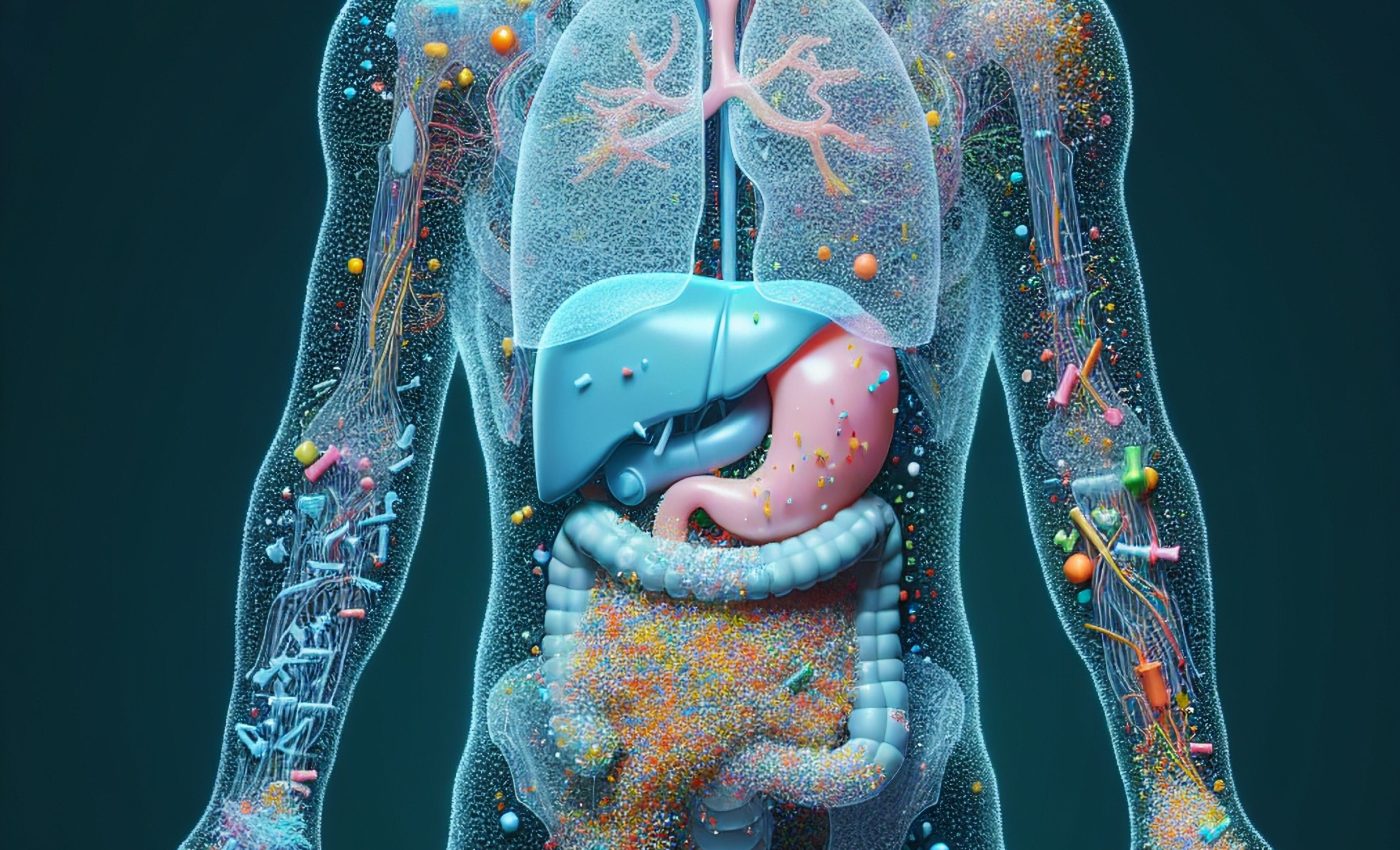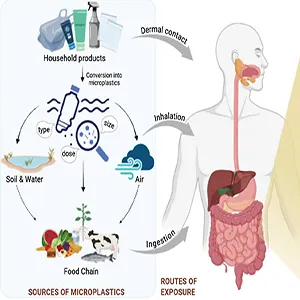
First sample study shows microplastics are changing human gut microbiomes
Plastic made life simpler. It wrapped food, built cities, and made modern living affordable. But the same invention now shows up where it shouldn’t – inside the human body.
Tiny fragments called microplastics have entered our bloodstream, organs and, most worryingly, our gut.
These microscopic particles aren’t just sitting there. They’re changing how the bacteria inside us behave.
How microplastics affect the gut
Your gut isn’t just a digestive tube. It’s a living community filled with trillions of bacteria that help digest food, manage your immune system, and even influence your emotions. When that community stays balanced, you feel well.
When it’s disturbed, everything else – from your energy levels to your mood – can shift. Scientists suspected for years that microplastics might interfere with this balance. Now they’ve confirmed it.
First proof in humans
At UEG Week 2025 in Berlin, researchers from the Medical University of Graz revealed a study that made headlines. It came from the microONE project at CBmed in Austria.
Scientists collected stool samples from healthy volunteers and used them to grow gut bacteria in the lab. Then they exposed those bacterial cultures to everyday plastics like polystyrene, polyethylene, and polypropylene.
The results were surprising. The total number of bacteria didn’t change much, but their behavior did. The environment turned more acidic, which meant the bacteria were reacting. Some species multiplied rapidly. Others declined.
The entire microbial system shifted – mirroring what’s often seen in people with depression and colorectal cancer.
Microplastics alter gut microbes
The microplastics didn’t just drift harmlessly through the samples. Each type interacted differently with the bacteria. Some changed acid levels. Others disrupted amino acid activity or energy production.
The gut’s chemistry adjusted to these intruders, altering how bacteria communicated and functioned. Even small chemical changes had big consequences.
What might be happening
“At this stage, the exact pathways remain unclear, but several plausible explanations are emerging,” noted lead author Christian Pacher-Deutsch, reflecting on the complexity of the findings.
He explained that the relationship between plastic particles and gut microbes is not straightforward – it involves both chemical and physical factors working together inside the gut environment.
“Microplastics may also carry chemical substances that directly influence bacterial metabolism. This can lead to changes in acid production, which may serve as a bacterial stress response, unintentionally altering the gut’s pH.”
These shifts could then trigger feedback loops that further affect the balance of the microbiome, noted Pacher-Deutsch.
Studies show the same trend
This isn’t an isolated finding. A 2025 review published in BMC Gastroenterology looked at twelve different studies involving humans. The trend was clear: microplastics disrupt gut bacteria.
Populations of helpful microbes, like Bifidobacterium and Faecalibacterium, declined, while inflammatory ones such as Escherichia-Shigella and Bilophila became dominant.
That imbalance was linked to weaker immunity, chronic inflammation, and metabolic stress.

Plastic exposure before birth
The story gets even more troubling. Scientists have discovered microplastics in human placentas and in meconium – the first stool of newborn babies. That means exposure begins before birth.
These particles seem to pass through the placenta and reach the fetus, entering a system that is still forming its first bacteria. The idea that a baby’s microbiome might start life altered by plastic is deeply unsettling.
Chemicals make it worse
Microplastics don’t come alone. They carry additives and pollutants. Some release phthalates that interfere with hormones. Others leak aldehydes and hydrocarbons that damage cells.
Several studies show that microplastics lower levels of short-chain fatty acids, which are vital for maintaining the gut’s lining and reducing inflammation.
When those levels drop, the gut wall weakens, allowing harmful substances to seep into the bloodstream.
Smaller microplastics harm gut
The smaller the plastic, the more dangerous it becomes. Nanoplastics, which are tiny enough to slip through cell membranes, can lodge inside tissues and stay there.
Larger fragments can’t move as deeply but still disrupt bacteria by changing how they attach to the gut wall. The smallest pieces often cause the biggest reactions, even at lower concentrations.
Gut diversity falls
Diversity is the backbone of gut health. A mix of bacteria keeps digestion smooth and immunity strong. When microplastics enter, that diversity shrinks.
Research on PVC, PET, and PLA shows fewer bacterial species after exposure. Once that variety fades, the gut loses resilience. It recovers slowly, becomes inflamed easily, and struggles to defend against infection.
Plastic in daily life
“These findings are significant given how pervasive microplastic exposure is in everyday life. Microplastics have been found in fish, salt, bottled water, and even tap water, meaning that most people are exposed daily through ingestion, inhalation and skin contact,” explained Pacher-Deutsch.
Plastic is everywhere. You can’t escape it entirely, but small changes help. Use glass bottles, skip single-use containers, and filter your drinking water. Each step lowers your exposure, even a little.
Reduce plastic exposure
“The key takeaway is that microplastics do have an impact on our microbiome. While it’s too early to make definitive health claims, the microbiome plays a central role in many aspects of well-being, from digestion to mental health,” said Pacher-Deutsch.
“Reducing microplastic exposure where possible is therefore a wise and important precaution.”
The research findings reflect growing urgency. The microbiome is the body’s silent partner, managing systems we barely notice until they fail. Protecting it means protecting overall health.
Gut changing with microplastics
No one knows the safe limit of microplastic exposure. Most studies so far have been short-term and done in controlled labs.
The long-term effects of constant exposure remain unknown. Scientists are calling for broader, longer studies that follow people over time and track real-world conditions.
Microplastics don’t destroy the gut overnight. They reshape it quietly, altering how bacteria grow, communicate, and function.
The gut – once thought of as a stable, self-correcting system – is now reacting to pollution from the world outside. Plastic transformed human progress. Now it’s transforming human biology, one microscopic piece at a time.
The study is published in the journal BMC Gastroenterology.
—–
Like what you read? Subscribe to our newsletter for engaging articles, exclusive content, and the latest updates.
Check us out on EarthSnap, a free app brought to you by Eric Ralls and Earth.com.
—–













